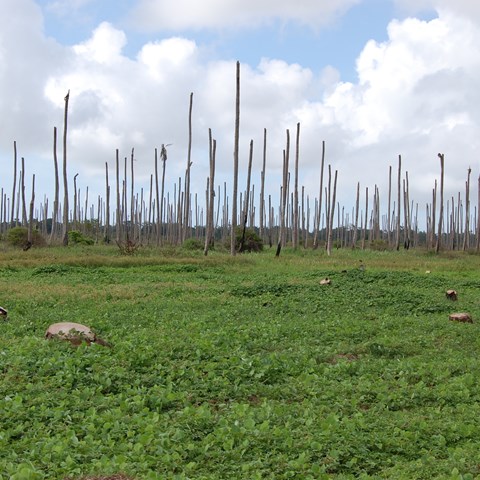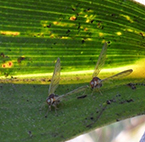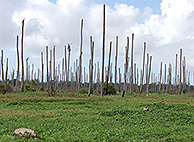Pioneering work on plant disease that threatens the cultivation of coconut trees in Mozambique

More than eight million coconut trees have been killed by a bacterial disease that spreads quickly in Mozambique. Some of the basic biological factors behind this epidemic are now revealed in a dissertation from SLU by João Bila. Among other things, this pioneering work identifies other palm species that can be infected and act as sources of infection.
The coconut tree is also known as the "tree of life", reflecting the infinite uses of the tree's various parts. The coconut tree is a major cash crop in Mozambique, and contributes to the income and food security for millions of Mozambicans.
Outbreaks of the bacterial disease CLYD (coconut lethal yellowing disease) has so far killed more than eight million coconut trees in Mozambique, and threaten the livelihoods of over 14 per cent of the country's population. In his doctoral thesis at SLU João Bila has investigated some of the most important requirements for this plant disease to spread in this way, such as alternate host plants and insect vectors that can spread the bacterium from plant to plant. The results of these first scientific studies of the background to the epidemic are promising.
"I believe that our studies have given us opportunities to develop a sustainable strategy for the control of this disease", says João Bila.
An investigation of bacterial strains that were collected in different parts of the country showed that the genetic diversity among CLYD bacteria is high in Mozambique, the highest that has been observed in any African country, which was previously unknown.
CLYD bacteria belong to the group phytoplasma, and are spread from plant to plant by insects. The high genetic diversity makes researchers suspect that several insect species can contribute to the spread of the disease, and that it also can utilize more species than the coconut palm as host plants. This would imply additional challenges for the management of coconut plantations.
In João Bila's project, the researchers have identified an insect species, a planthopper, which appears to be spreading CLYD in Mozambique. Another discovery was that other palm species, including ornamental palms, can be alternative host plants for CLYD.
"The identification of alternative hosts and an insect that spreads the disease are essential discoveries that are needed in the work for sustainable plantation management", says João Bila. "Lack of knowledge in this area has led to failures in previous control strategies".
The thesis also shows that the plantation management is important for disease occurrence; How old the palm trees are, whether other palm species grow on the farm, what varieties of coconut that are grown, and if the roots are pruned, are examples of factors that are important.
"Our studies have increased our knowledge of the CLYD epidemiology in Mozambique, and can help with the development of a more efficient and sustainable CLYD strategy, saving jobs and providing livelihood and hope for many people", concludes João Bila.
____________
João Bila, Department of forest mycology and plant pathology, defended his PhD thesis Coconut lethal yellowing phytoplasma disease in Mozambique at the Swedish University of Agricultural Sciences (SLU) in Uppsala on June 10th.
More information
João Bila
018-671628, Joao.Bila@slu.se
Link to the dissertation (pdf)
http://pub.epsilon.slu.se/13381/
Press images (may be published without charge in articles about these findings, please acknowledge the photographer).

Diostrombus mkurangai – a potential insect vector for CLYD in Mozambique. Photo: Luisa Santos

A mortality close to 100 per cent has been observed in many coconut plantations. Photo: Nils Högberg